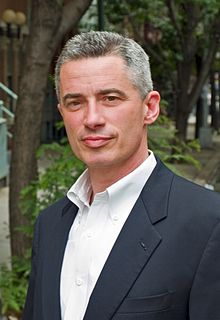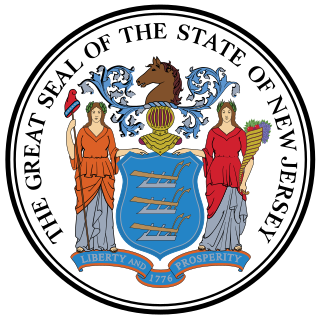It has been requested that the title of this article be changed to List of governors of New Jersey . Please see the relevant discussion on the discussion page. The page should not be moved unless the discussion is closed; summarizing the consensus achieved in support of the move. |
| Governor of New Jersey | |
|---|---|
 | |
| Style |
|
| Status | |
| Residence | Drumthwacket |
| Seat | Trenton, New Jersey |
| Term length | Four years, renewable once consecutively |
| Constituting instrument | New Jersey Constitution of 1776 |
| Precursor | Governor of New Jersey (Great Britain) |
| Inaugural holder | William Livingston |
| Formation | August 31, 1776 |
| Deputy | Lieutenant Governor of New Jersey |
| Website | state |
The Governor of New Jersey is the head of the executive branch of New Jersey's state government and the commander-in-chief of the state's military forces. The governor has a duty to enforce state laws and the power to either approve or veto bills passed by the New Jersey Legislature, to convene the legislature, and to grant pardons, except in cases of treason or impeachment. [1]

The government of the State of New Jersey is separated into three distinct branches: legislative, executive, and judicial. The powers of the state are vested by the Constitution of New Jersey, enacted in 1947, in a bicameral state legislature, the Governor, and the state courts, headed the New Jersey Supreme Court. The powers and duties of these branches are further defined by acts of the state legislature, including the creation of executive departments and courts inferior to the Supreme Court. Like most states, the state allows the incorporation of county, and other local municipal government.

In the United States, a state is a constituent political entity, of which there are currently 50. Bound together in a political union, each state holds governmental jurisdiction over a separate and defined geographic territory and shares its sovereignty with the federal government. Due to this shared sovereignty, Americans are citizens both of the federal republic and of the state in which they reside. State citizenship and residency are flexible, and no government approval is required to move between states, except for persons restricted by certain types of court orders. Four states use the term commonwealth rather than state in their full official names.

The New Jersey Army National Guard consists of over 8,000 Guardsmen. The New Jersey Guard is currently engaged in multiple worldwide and homeland missions. Units have deployed to Iraq, Guantanamo Bay, Afghanistan, Germany, Kosovo, Kuwait, Qatar, Bahrain, and Egypt. The Guard has also deployed to help with the recovery from Hurricane Irma in Texas and the U.S. Virgin Islands, Hurricane Maria in Florida and Puerto Rico, and Hurricane Katrina in New Orleans.
Contents
- Governors
- Acting governor
- Other high offices held
- Living former U.S. governors of New Jersey
- See also
- Notes
- References
- External links
There have been 55 official governors of New Jersey, with several others acting as governor for a time. [lower-alpha 1] In the official numbering, governors are counted only once each, and traditionally, only elected governors were included. However, legislation signed on January 10, 2006, allowed acting governors who had served at least 180 days to be considered full governors. The law was retroactive to January 1, 2001; it therefore changed the titles of Donald DiFrancesco and Richard Codey, affecting Jim McGreevey's numbering. [2] The current governor is Phil Murphy, who took office on January 16, 2018.

Donald Thomas DiFrancesco was the 51st Governor of New Jersey from 2001 to 2002 by virtue of his status as President of the New Jersey Senate, the upper house of the New Jersey Legislature.

Richard James Codey is an American Democratic Party politician who served as the 53rd Governor of New Jersey from 2004 to 2006. He has served in the New Jersey Senate since 1982 and served as the President of the Senate from 2002 to 2010. He represents the 27th Legislative District, which covers the western portions of Essex County and the southeastern portion of Morris County. Codey is the longest-serving state legislator in New Jersey history, having served in the New Jersey Legislature continuously since January 8, 1974.

James Edward McGreevey is an American politician and member of the Democratic Party, who served as the 52nd Governor of New Jersey from 2002 until his resignation in 2004. He served in the New Jersey General Assembly from 1990 to 1992, as the Mayor of Woodbridge Township from 1991 to 2002 and in the New Jersey Senate from 1994 to 1998. He was the Democratic nominee for Governor of New Jersey in 1997 but was narrowly defeated by Republican incumbent Christine Todd Whitman. He ran again in 2001 and was elected by a large margin.




































































